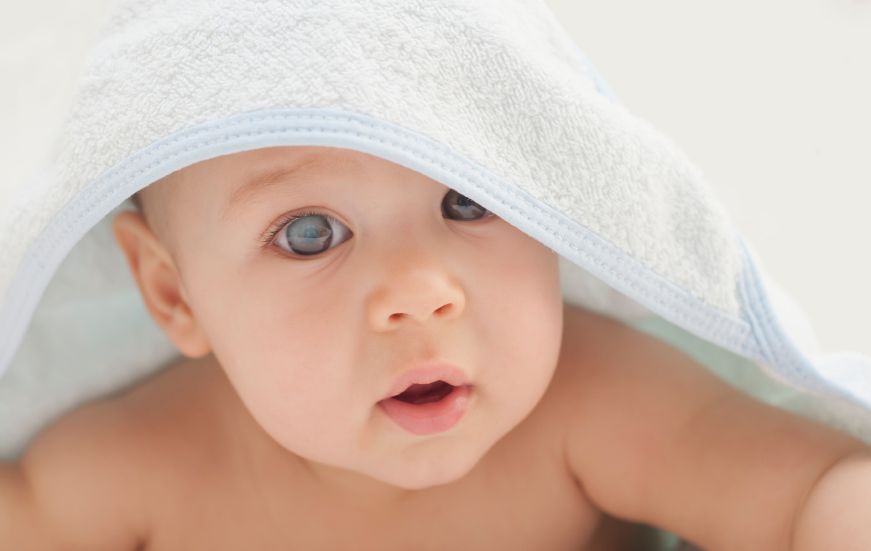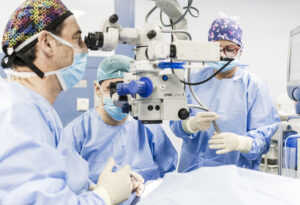Eye diseases
Congenital cataracts

What are congenital cataracts?
Congenital cataracts are an eye disease characterised by the opacity of the lens from birth. The crystalline lens is the eye’s natural lens, which focuses on objects at different distances, reflecting the light from them onto the retina so that we can see them clearly and distinctly. The transparency of the lens also ensures that we can see bright, vivid colours.
Cataracts are usually linked to ageing, since, as we grow older, the lens loses flexibility and transparency. However, in the case of congenital cataracts (which are rare), this clouding of the lens is present at birth, in one or both eyes, which prevents the baby from developing a sense of sight.
Since they cannot be prevented, we need to carry out a thorough eye examination of newborns to detect congenital cataracts as soon as possible. In fact, it is often essential to treat them in the first few weeks of life, when it is important that the baby receives adequate visual stimulation for a good development.
Symptoms
One way of detecting whether you have congenital cataracts is by looking at the pupil of the eye: although it is usually black, the opacity of the lens makes it appear totally or partially white. This effect can also appear as a white reflex, as if the spot were inside the pupil (leukocoria), and is diagnosed by an examination of the fundus in the paediatric ophthalmologist’s office.
On the other hand, congenital cataracts are also very often associated with childhood strabismus, as the loss of vision associated with the loss of transparency of the lens stops the development of the binocular function that allows us to align both eyes.




